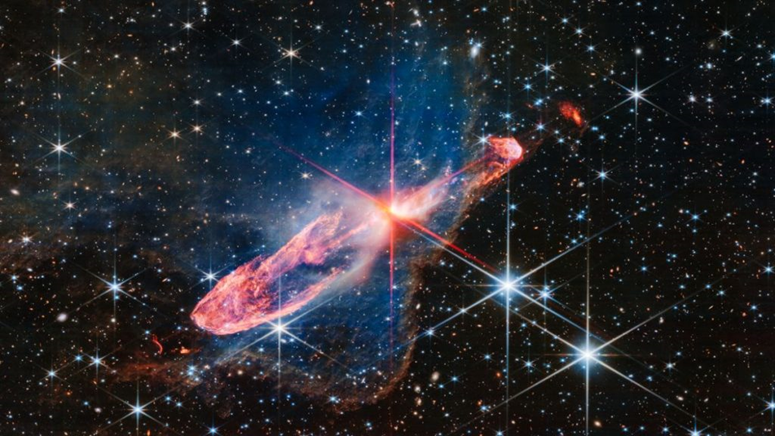James-Webb Space Telescope Reveals Mysterious 'Galactic Question Mark'

A cosmic object that puzzles astronomers
The Universe continues to surprise us with its well-kept secrets. Recently, the James Webb Space Telescope (JWST), renowned for its exploration of the cosmos, made a discovery that piqued the curiosity of astronomers around the world. A fascinating image has been released by the European Space Agency's JWST team, highlighting two young stars in formation, as well as an enigmatic object that looks suspiciously like a gigantic cosmic question mark.
The captivating photograph taken by the JWST reveals two young stars, Herbig-Haro 46/47, nestled in a growing disc of matter that spans millions of years. However, what really catches the eye is the intriguing object lurking beneath these stars. Resembling a giant cosmic question mark, its enigmatic presence raises questions about its origin and meaning.

According to experts from the Space Telescope Science Institute (STScI), the unusual shape and color of this object could be crucial indicators in understanding its identity. They hypothesize that it could be either a distant galaxy or the result of interactions between several galaxies. The object's red hue suggests it's a considerable distance away from us, and this sighting could mark the first-ever time such a cosmic question mark has been spotted.
Astronomers have formulated several theories to explain the nature of this mysterious object. Matt Caplan, an assistant professor of physics at Illinois State University, believes it could result from the merger of two galaxies. The distinct features of the object could correspond to galaxies merging in the background, with the upper part of the question mark belonging to a more massive galaxy undergoing a tidal disturbance. However, other intriguing possibilities are also considered.
This fascinating discovery is just one illustration of the multitude of revelations expected from the James-Webb Space Telescope. With its high-resolution near-infrared imagery, the space telescope is able to peer into the farthest reaches of the Universe, detecting galaxies billions of light-years from us, shortly after the Big Bang.
Source: websites

